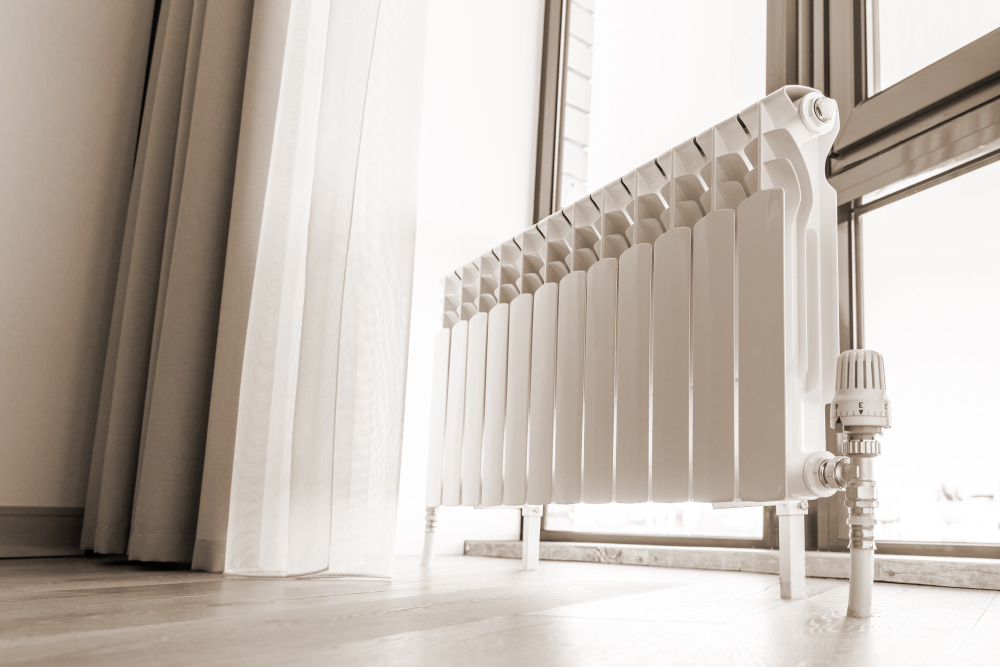On average, about half of utility bills and 50% of energy (39% in case of commercial building) is spent on HVAC, but this number could be greatly reduced if the regular HVAC were to be replaced with an energy efficient HVAC unit.
If so, what makes a HVAC unit energy efficient and how might you purchase the best HVAC for your purpose?
There are many, many models and types of HVAC units out there to choose from. The best way to tell how energy efficient they are is to look at their energy efficiency ratings. There are a number of ratings out there, but the easiest one to begin with is the Energy Star.

Ratings To Look For
Energy Star
The Energy Star is the EPA’s voluntary program that defines energy efficient HVAC models, and is less of a rating system and more of a certificate.
If the HVAC unit has Energy Star mark on it, it means that unit has been tested and approved, and is energy conserving. According to Energy Star, installing their Energy Star-approved HVAC unit can save $115 on annual household utility bills. The one catch with Energy Star is that it is a voluntary measure and companies have no obligations to get certified, even though most energy-efficient products do get certified as a validation of their energy-saving capability.
Efficiency Rating
Another rating system to check out is the Efficiency Rating. In the US, the Department of Energy governs all cooling systems and heating systems manufactured, and they come with an Efficiency Rating. AFUE, or Annual Fuel Utilization Efficiency ratio, is the percent of heat produced for every dollar of fuel consumed. This heat efficiency rating for gas furnaces works like miles-per-gallon for cars, and the higher rating a furnace has, the lower fuel cost it has.
SEER
The SEER, or Seasonal Energy Efficiency Ratio, is a cooling efficiency rating for heat pumps and air conditioning systems. The SEER works like AFUE, and the higher rating a unit has, the more energy and money one could conserve. The HSPF, or Heating Seasonal Performance Factor, is system that measures the heating efficiency of heat pumps and works in a similar fashion to SEER.
Creating an Efficient Environment
Installing a high-performance HVAC system also helps in conserving energy, as it improves Indoor Environment Quality, or IEQ, by offering increased user thermal comfort. High-performance HVAC can reduce annual energy costs by 30%, when installed in conjunction with building design, in a period of 3 to 5 years. This figure increases to 40% when period is extended to 7 years.
To incorporate high-performance HVAC units into a building, one must consider the design of the building, as the building should involve features to reduce heating and cooling necessities, such as incorporating passive cooling and heating measures like sun control and shading devices.
Some other suggestions include having an air retarder system into the exterior walls and including glazing with high cooling index in internal-load dominated structures. Also, HVAC units should be the right size for building, and one should select units that could perform efficiently at part-load. Choosing the right size equipment means deciding on the system that is compatible with required capacity, so avoid systems that provide more capacity, as the extra capacity may never be used.
The units that excel at performing part-load incorporate variable volume or variable capacities for cooling fans, cooling towers, pump systems, boiler plants, and fan systems. It may also be helpful to shave off the workload and determine the peak and off-peak differences to help avoid unnecessary peak-demand charges.
Maximizing Efficiency Through Load Control
Heating Systems
As there are different types of HVAC systems, there are different ways of achieving higher efficiency in each type of HVAC unit. In heating systems, condensing boilers are recommended for maximum efficiency, as they tend to reduce the cost of breeching, since the leftover gas could be directly vented outside.
They offer around 95% combustion efficiency, and usually run on natural gas. They can be connected in modular installations, and also are more efficient at working part-load compared to non-condensing boilers.

With heating control, you could most easily achieve highefficiency by reducing the on-off cycle of boilers. Utilizing modulating boilers that constantly adjust heat input to match workload effectively saves energy, and assembling small boilers into a group of modular plants is good for varying workload, as boilers could be taken on or off line depending on the need.
Ventilation Systems
For ventilation systems, a fan-powered VAV (variable air volume) system is currently the most efficient option out there, as these units are capable of working with varying workload and require less energy to reheat while maintaining good airflow.
Raised floor air distribution also has the potential to conserve energy, as it diffuses the temperature by sending heated air toward the ceiling, and keeping a constantly comfortable temperature for people. VAV system controls are capable of working with a small load, and should be used to strike the right balance between supply and return airflow.
For air conditioning systems, evaporative coolers, also known as swamp coolers, are recommended. They can greatly reduce peak demands with their mechanism, which cools the air by humidifying it and then evaporating the moisture, thus efficiently conserving energy.
As far as condensers go, the waterside economizer can conserve energy greatly, as when the outside temperature is low enough, there may not be a need to use the chiller, as the waterside economizer utilizes water loops to chill the water.

Utilizing an integrated chiller plant may be more difficult to achieve but is more energy efficient than other air conditioning control methods, as this method optimizes through monitoring and computational strategies to figure out the minimum required energy cost for cooling towers, fans, pumps, and chillers combined.
Heat recovery plays an essential part in achieving energy efficiency, and the most efficient option at the moment is the use of desiccant wheels, as they have 85% efficiency and are capable of recovering both latent and sensible heat. This method of dehumidification works by retrieving moisture from air stream, and then exposing the moisture to another air stream via rotating the wheel, which dries the material.
Final Thoughts
Installing energy efficient HVAC system may initially result in more upfront cost, but it is an investment guaranteed to bring in tremendous benefits in the long term, both environmentally and financially. Conserving energy doesn’t have to be complicated, so just keep these few pointers in mind when you need a new HVAC system.

